Hasegawa 1/48 “Year of the Cat” NAS Daytona Beach F6F-3 Hellcat “Flight 138” 1945
Well the New Year is off to a great start... I just finished up the first model for this Year. Granted, most of the work was done last year, so it only needed some little things completed to make it whole. One down and three more Hellcats to finish up...
This one all started with me finding some very cool pictures of one of my favorite planes in a book I have. The book is called "Naval Fighters Number Ninety-Two Grumman F6F Hellcat" by Steve Ginter... It's an excellent book and I highly recommend it to all of you 'Cat fans out there.
The book has several pictures of Hellcats that were assigned to a stateside Naval Air Station training base... called NAS Daytona Beach. This also happens to be my hometown...
I just had to pick a plane from the Daytona NAS (which stands for Naval Air Station) and get busy...
This picture is the one I chose as inspiration for the build. Unlike what the caption above the photo says, I don't think this plane had a red speed ring on the cowling... notice the Hellcat in the background, below the propeller. It has it's tail positioned towards the photographer... more on that later.
and what I ended up with as a finished plane...(minus the pilots in the original photo).
Here's a little history about the Daytona Beach airport, before Daytona became the NASCAR capital it is today...
The Daytona Beach Airport was built during the mid 1930's. Prior to this, the area was served with a much smaller airport located not far away near the Halifax River, called "Bethune Point". If you go back even further, planes simply landed right on the beach... It must have been something else to be a barnstormer !
Shortly after WW2 started, the US Navy took over most airports in the area and put them to use for the War effort. Daytona Beach was no exception. The Navy extended the main runway and also widened it to 200 feet wide at the same time.
Here's a photo of the airport as it looked in 1943 after these improvements were made.
Now as a comparison, here's a modern photo of how the airport looks today ... You will notice that most of the runways are now gone... and a 2.5 Mile long NASCAR Speedway is right next door... Embry Riddle University, shopping centers, parking lots, a larger mall, and a High School now occupy the places where the runways once were.
Central Florida was a hotspot for training Naval Air and US Army cadets during the War. The state was chosen for it's better than average flying weather when compared to the rest of the Country. Daytona Beach was initially used as a Dive Bombing training location and together with the nearby Sanford and Deland Naval Air Stations, many young aviators were turned out . Several OLF's (Out Lying Fields) were used to augment the main bases of Daytona Beach, Sanford and Deland. These were Tomoka (now called the Spruce Creek Fly Inn), Ormond, New Smyrna. Farther North there was Bunnell and Palatka. but these two Stations were mainly under the control of Jacksonville, which was a major training base. Farther South there was the main base of Melbourne and Miami, which were primarily Fighter training locations. Where the Space Center is now, it was once a Navy Base during WW2, and was called NAS Banana River.
Here's a picture taken of some service personnel at Daytona Beach NAS during the War.
and a few photos of Grumman F6F Hellcats that were stationed here in Daytona Beach:
Daytona Beach planes had the letter "D" as a prefix and the "F" was for "Fighter" Deland NAS had the letters "DE", followed by "S" for "Scouting" (used on SBD Dauntless planes which trained in Deland extensively) or "F" for "Fighter". The majority of the training locations had their own set of letters used as a designator.
Here's a flight of Hellcats flying in formation somewhere over the Atlantic Ocean.
Remember when I mentioned the speed ring wasn't red as mentioned in the original picture ? Here you can see the tip of the rudder / fin assembly has a red tip with a white stripe. The cowling is overall Gloss Sea Blue. Red would have showed up in the same contrast as the tip of the tail has.
If you look really close at the original photo where the caption states the speed ring was red... You will notice another F6F in the background, just below the propeller. This Hellcat has the tail positioned towards the photographer, and you can clearly see the tip is also red, with a white stripe, just as in this formation picture here.
This is why I don't think the speed ring was red. It's probably just the way light reflects on the cowling.
As a bonus, I found this cool picture of a unit patch that was worn by personnel stationed at Daytona Beach... An alligator being "flown" by a Native American Indian, carrying a bomb... How appropriate !
Initially F4F Wildcats and SBD Dauntless planes were stationed at Daytona, as well as Deland. Sanford however was more of a Fighter base, and I don't think that SBD's were stationed there.
Later as the War progressed, the types of planes used here also changed. There was a large contingent of Curtiss "Helldiver" SB2C's stationed here in Daytona, along with the F6F Hellcats in the later part of the conflict. Deland had SBD's and later PV-1 Ventura's.
This area had it's share of accidents and crashes... This was especially true when you consider that many of the pilots flying here had very little flight time. Here's a picture of a F6F-3 after it bellied in on a runway in Daytona... "DF-273"
This one lost it's engine and became a glider..."DF-33". It crashed somewhere at the end of one of the runways... Craig Abrahamson and I both think it was the "East / West" main runway since that's the prevailing wind direction...
The area was also fatal to flyers... Hundreds of fledgling flyers perished while learning to fly here in Florida ... Many more pilots and aircrew died throughout the Country on various training missions. There's an old military saying that goes something like this: "Train hard for War and Bleed less during it." Sometimes we bleed while training too...
From Melbourne alone, there were at least 63 pilots who died... Here's a quote about Melbourne NAS directly from the book I mentioned earlier:
"From January through December 1943, 546 pilots graduated, 35 were washed out and 20 died during training. From January through October 1944, 916 were graduated, 62 washed out, and 27 were killed. By the end of the War, 63 pilots had died in training. A breakdown of these losses was :
Midair Collisions 24
Loss of Control (spins / Stalls) 15
Failed to Return 6
Landing Accidents 6
Engine Failures 4
Structural Failures 4
Weather 2
Take-Off 1
In Flight Fire 1
Melbourne had a Fuselage Code of "W". At one point during the War, Melbourne also used the fuselage codes of "ME".
Here again as with all Navy Fighters at the time, they used the letter "F" to designate "Fighters" So Melbourne F6F's had the side fuselage code of "WF".
Here's one that crashed from Melbourne NAS, and set a small portion of the nearby woods ablaze... "WF-24"
I wanted to build this plane as a tribute to my hometown, and as a tribute to all of the men who lost their lives while learning how to fly for defense of their Country... Freedom is not Free.
This plane was built as part of the "Year of the Cat" Group Build. I have three others as part of this build thread that are very close to being completed.
Here's a link to the build log, which is still underway as the last three 'Cats are not quite done yet.
http://imodeler.com/groups/year-of-the-cat/forum/topic/3-hasegawa-f6f-hellcats-1-daytona-nas-1944-45-2-blue-angels-bird-3-target-tow-or-drone/
A few more little notes:
Some of you sharp eyed readers may have wondered why are the landing gear covers off ? Did he forget to put them on ? Nope... Most of the Hellcats used in training units had the landing gear covers removed.
Or why is there only a single .050 caliber weapon in each wing ? These planes were used as training planes, but they were still armed, just in case a German U-boat was spotted offshore. A few well placed .050 caliber rounds could possibly prevent an enemy sub from diving, allowing other planes and ships to come in with depth charges or bombs and finish the job.
Plus they could also practice gunnery and not use as much ammunition so that it could be used elsewhere in the world where it was more urgently needed.
I realized the planes shown in the pictures were all set up like this. You can see it in the pictures I provided...
Meanwhile, here are some more pictures showing the completed build... Some may say it looks a little too shiny for a scale finish of Gloss Sea Blue. It probably is... but I like it.
Towards the later part of the War, most Hellcats and F4U's were repainted in overall Gloss Sea Blue after they were refurbished. It's kind of neat to see an earlier plane with a later paint scheme, at least for me.
Enjoy, and as always...
"Comments are encouraged".
Happy New Year !
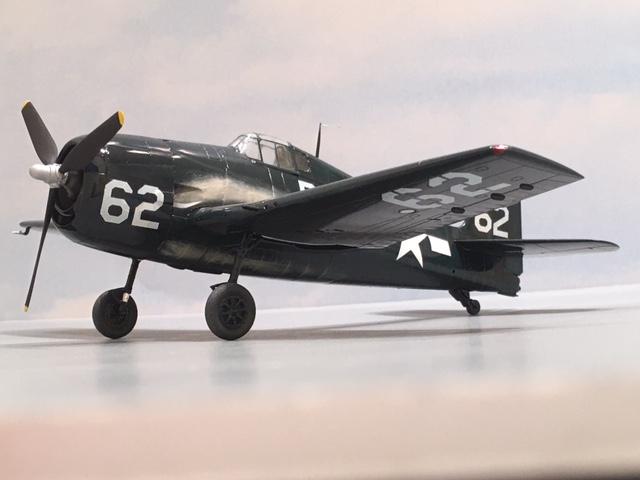

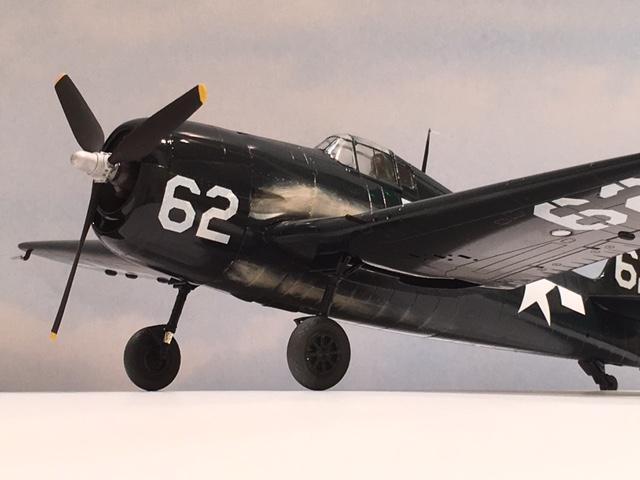
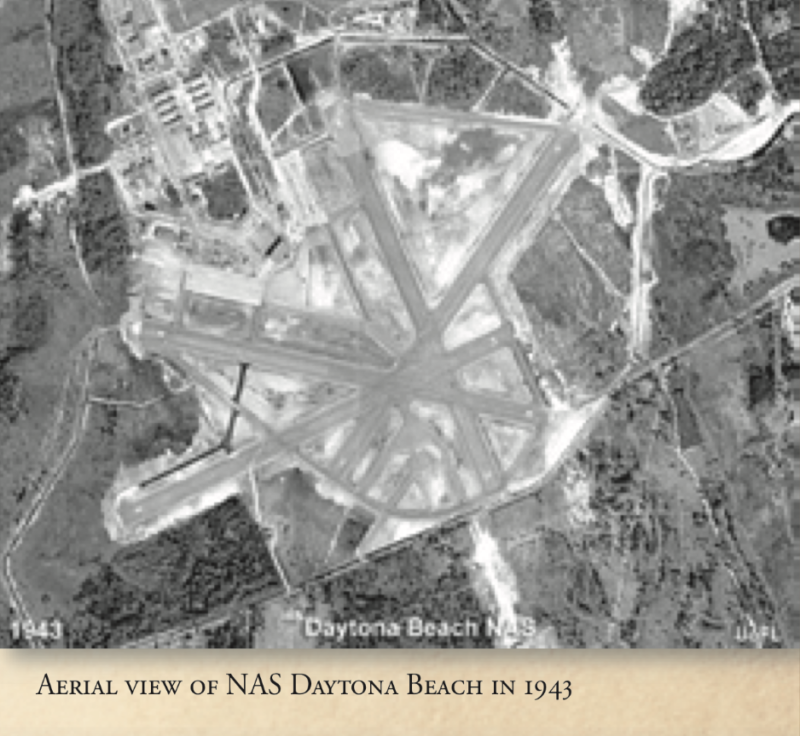

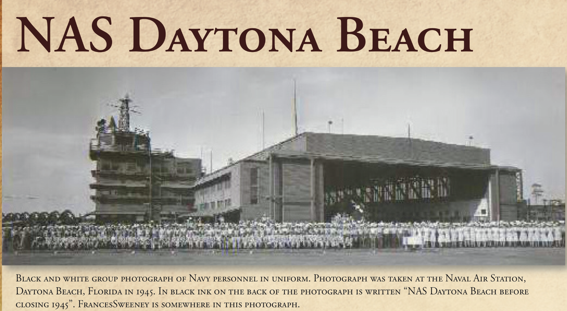
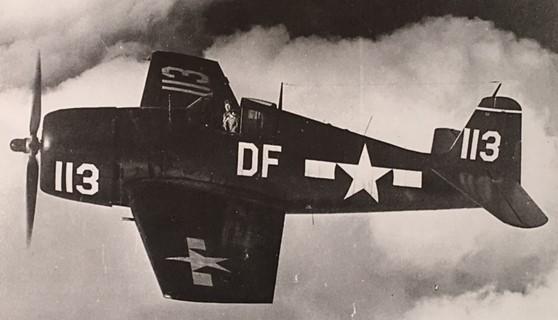
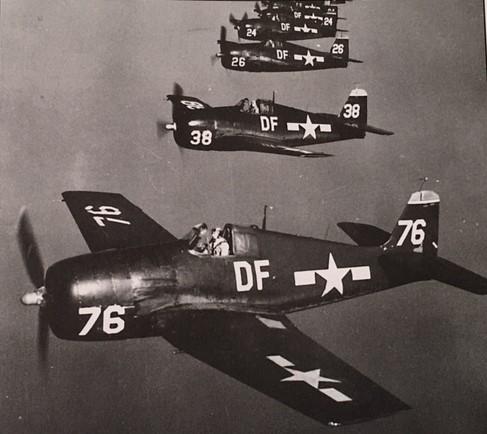
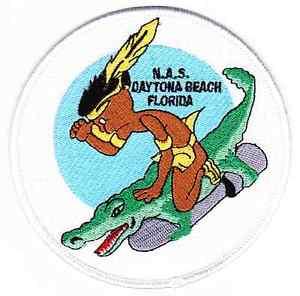

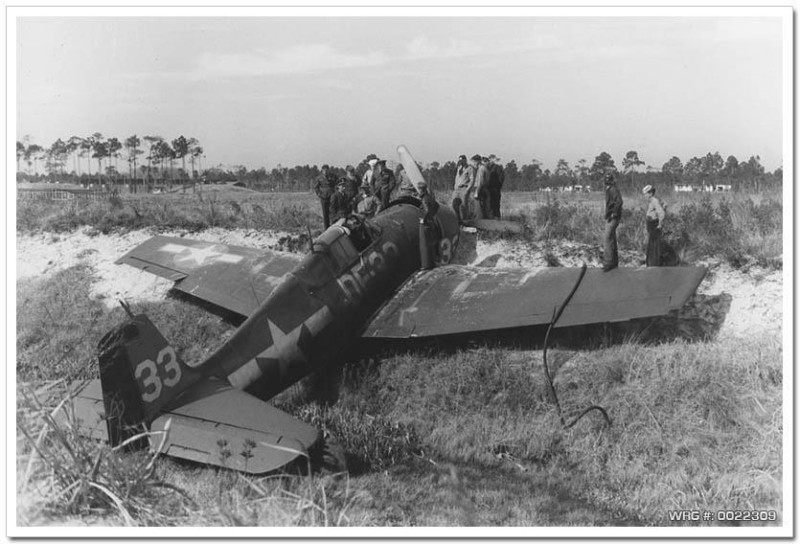

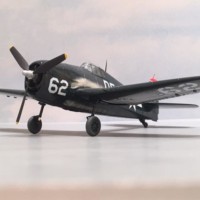
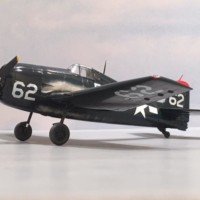
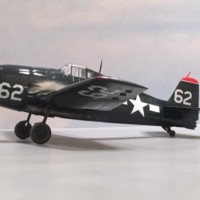
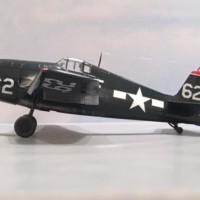
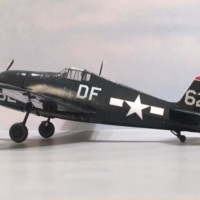
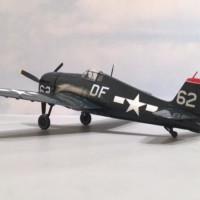
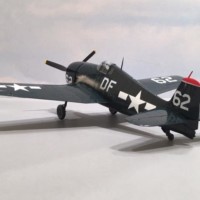
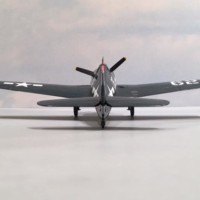
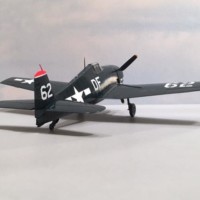
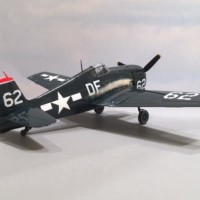
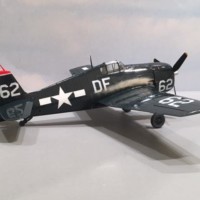
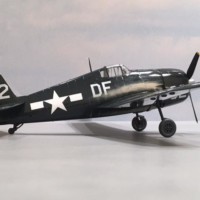
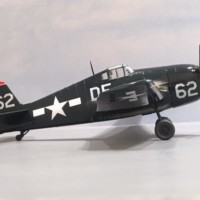
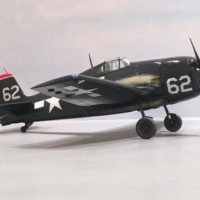
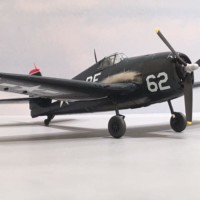
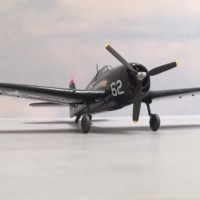
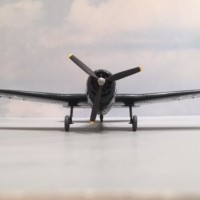
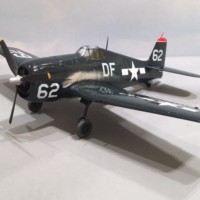
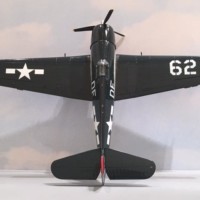
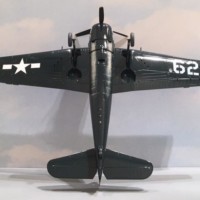
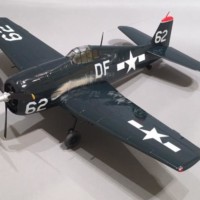
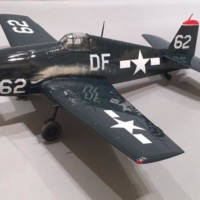

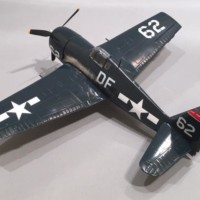
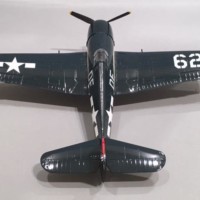
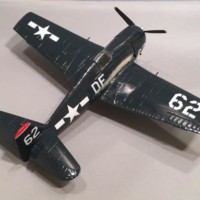
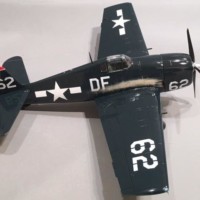
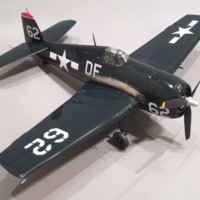
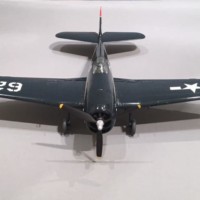
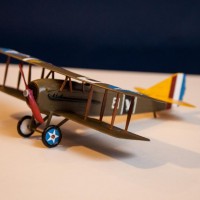
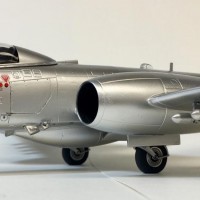
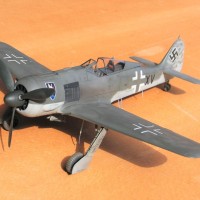
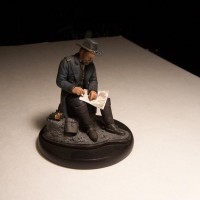
Thanks for the "history lesson", Louis (and the little blurb about my/our 'best guess' in that one photo)...I've learned a lot about some things I didn't realize before after reading your narrative - and I thank you for that as well.
As to your build, it's - as always - an extremely nice piece of work with equally nice photography accompanying your post. Take care, my friend.
You're welcome buddy ! It's amazing how the area has changed so much over the years isn't it ?
I like what your doing Louis...home town guy pays tribute to the past and offers some history. Some observations, the first photo with the pilots standing in front of a/c 62 mentions a speed ring being painted red. One, what is a speed ring? Two, is the speed ring the front ring mounted on the cowling face, the rounded sheet metal mounted on the leading edge of teh opening for the engine? Three, is that ring painted red?
Another, observation (niggle) the ground crews saved a few man hours by letting the exhaust stains stay on the air frame a while. I noticed that exhaust stains not only run down to the bars and stars but, almost to the rudder. They must of have been using those air frames a lot and the crew chiefs where spread thin.
Hello Stephen. Thanks for commenting
Here's the answers to your questions...
If you look at the tips of the tails on various other GSB painted Hellcats in the photos I provided with the article, they are obviously a different color. Even the Hellcat positioned below the propeller in the "138" photo has a distinctly different color on the tip of the tail. The color from the tip of the tail would have showed up much lighter on the cowl in the same picture with the 8 pilots from "138" in it. So much so that it would be very visible. I tried to explain that later on in the article.
If you study the in flight echelon formation picture, this becomes even more apparent. The first plane in this photo is DF-76 and the last one that you can clearly make out the side number is DF-24. Here in this picture, the tips of the tail are red (or possibly another color such as light blue) and the speed ring is definitely the same color as the rest of the plane... Gloss Sea Blue.
However, the earlier planes I included such as WF-24, and possibly DF-273 may very well have had red speed rings.
It is very hard (sometimes impossible) to accurately determine colors from black and white pictures.
Yes you are absolutely correct about the exhaust staining. The effects of using Tetra Ethyl Lead in high octane AV gas left these distinct exhaust stains on the sides of planes. You can clearly see it goes along the entire sides of plane DF-62. I would venture to say that the rudder even had exhaust staining in the picture I posted ...
But I didn't want to stain this plane that much. So I chose to stop it where I did. At some point in time the ground crews would have cleaned the sides of the plane and the whole staining process would start all over again the next time it was flown.
I looked at the various photos of NAS Daytona Beach planes and chose a happy medium for the exhaust stains.
I hope this helps to answer your questions.
Thanks again, and I hope you had a great New Year.
Louis, thank you for being gracious enough to answer my questions. I've seen exhaust staining on P-38s in theater like that and had a room mate who flew in helo's during Nam and they'd wipe down the bird with fuel to get ride of the exhaust staining that would extend down to the boom rotor. I seem to recall that the Germans would remove the landing gear covers in their a/c to let the gear better retract and come down in snowy and muddy conditions. But, in Florida where its always sunny what would be the rational? Could the landing and take offs be so often that it would mess up the gear? I too I'm looking forward to the completion of iron works. Having a story with history gives a better narrative of the model and answers the who,what and why questions. The photos add another dimension too. You can get a better idea of what people went through in their lives. Looking at some of the numbers on crashes and fatal s... don't quote me but, something like 35,000 students lost their lives in training in the state during the war. A typical count for automobile accidents annually in the states.
You're welcome Stephen... Please don't hesitate to ask away if you have any other questions. If I know the answer I'll do my best to get a reply to you. If I don't then I'll try to steer you in the right direction.
Yes a lot of planes operated with the gear covers removed, in some cases like the Ju-87 Stuka, Ki-27 Nate, and Henschel Hs-123 they even removed the entire wheel spat covers. This was especially true when the planes were operated in cold or muddy conditions (or both) They didn't want the main wheels to freeze up in flight. This would mean disaster when the pilot landed, and often it could result in a nose over type accident.
As far as the F6F Hellcats having the landing gear covers removed when operated from training bases in Florida, I think (not 100 percent sure though) this was done to make it easier to inspect the gear and perform maintenance. These parts of the plane took a beating and regular inspections would be a must.
I know that they painted the landing gear struts on some F4U's with white paint after the War was over to help with detecting cracks in the main gear struts. This was done to assist with maintenance duties.
That's a sobering statistic with the numbers killed just to training accidents alone.
When you put it in perspective with annual automobile accidents here in the US, it adds another dimension... On average in our County alone, between 120-130 people die each Year in car crashes. I have responded to many wrecks where if the person was wearing a seat belt they would have survived.
Today it's not too sunny (or warm) down here in Florida... Raining and currently 39 F degrees ! Supposed to get down to the upper 20's F tonight. Not your typical day...
Take care my friend... The Iron works is up and running today... So please stay tuned.
Hello Louis...My compliments on a fine build of your 'trainer' Hellcat. Those markings are rarely seen on most Hellcat builds. Always nice to see something a bit unusual. I also enjoyed reading the history of Naval Air activities in Daytona Beach and the surrounding areas. Very nicely done Louis and I look forward to your other upcoming F6F builds.
Thanks Jim !
Also a little word of caution about the decals I used for the letters and side numbers...
They didn't lay down too nice once clear coated. The numbers had a bunch of tiny bubbles that appeared after the clear was sprayed on. The fuselage side letters had a lot of the clear carrier film that I cut away. They probably would have silvered badly if I did not.
But even the aftermarket US Insignia wrinkled up a little. It may have been a reaction with the clear...
Yes this area was very busy during the War with training activities. I wanted to build my Hellcats with a different scheme, one you normally don't see.
Please stay tuned and I hope to have the remaining three 'Cats done soon...
Thanks again my friend...
Great looking "Cat" Louis! I've been following the iron works build, and looking forward to seeing the stable mates when done!
Thanks Greg for the compliments. Today I was working on the Blue Angels plane and the drone. Hopefully not too much longer and I will post them all. Stay tuned buddy. Happy New Year!
One beautiful 'Cat, Louis, and your usual great piece of history. I know my father went to Army basic some where in central Florida in WW 2, he hated the snakes. I myself went to Navy boot camp at RTC Orlando, which is now occupied by a housing development.
Thanks for the compliments Robert.
The RTC Orlando base is no more... Now it's a housing development called "Baldwin Park" if I'm not mistaken... too bad. Lots of history disappeared there too...
There's a place not too far from Jacksonville called Camp Blanding. It's still used by the US Army today for training, but mainly reservists and National Guardsmen. Is it possible your Dad went there ?
The snakes can get nasty here at times... Depending on where you are makes a huge difference, and if it has been raining a lot, you tend to see more of them... Personally I'm not a big fan of them either... Mosquitos can get ugly too at times... and not the De Havilland type either... especially in the swampy regions.
Louis, outstanding, Pard!
I love the History lesson & all the photos. Of course, your build itself is excellent and first rate. I think you're right about the red ring - or lack of it.
I've had a theory about the training plane's landing gear covers since I first heard about them being removed.. I agree with you & my idea adds this to the reasoning: As you know, military equipment sometimes has little "hiccup" problems. It will be something that isn't earth-shaking, so to speak, so the engineers put out a service-wide temporary "fix" until they can re-engineer whatever was the problem, and in this case it might have been the gear covers. I have nothing specific to base this on, it's only experience from long years in the Military. This would go along with your explanation with all the many training deaths. Those planes simply had to raise & lower their gear MUCH more in training which may have aggravated a problem with gear doors. Hence - "take 'em off, Sergeant Maintenance guy."
Just my (possibly) hare-brained idea ...
Again, great Trainer, Louis!
Thanks my fellow DAT... My Brother from another Mother !
Yes as a former Army tanker I have experienced things similar to what you described... What the Motor Pool Sgt. says goes ! Like it or not... I'm sure the Navy had the same thing, but they had CPO's or Master Chiefs.
Good points indeed that you brought up. Thanks for liking the article too...
Looking good, Louis! I particularly like the history, brings a human touch to the machines. Can't wait to see the rest of them!
Today I did some work out in the "Iron Works" and got some more done on the drone and the Blue Angels plane. They are getting closer to being done. Hopefully in a few days I can wrap two more 'Cats up... and get them posted on here too.
Thanks for the kind words my friend... I sincerely appreciate that.
Nicely done Louis, and the history adds a lot to your presentation.
Thanks Tom ! History is like icing on the cake for me. I try to incorporate a little with each posting if I can.
Great Article and build Louis. Nice subject choice too - the training fields in the USA and Canada were vital in producing U.S. and allied pilots. Your post is an eloquent reminder of the sheer time and effort and cost (both in terms of lives and resources) involved in that.
Thanks David. I appreciate your comments. As a side note, most of these airports were turned back over to the local Cities after the War. Unfortunately many of the runways were dug up and the land was put to use for other things such as shopping centers and residential areas. It must have been a major undertaking to construct the airfields in such short notice. I'm sure that it would be next to impossible for something of this magnitude to happen today. I seriously doubt that it could be done again. Thanks again for sharing your thoughts with this. Take care my friend.
Great looking Hellcat.
Thanks Anthony.
A beautiful job, Louis, and once again you lead by example with your GB. I absolutely love all the historical footwork you've done, and (politely) disagree on the glossy finish: I think it is right.
Hello David ! Good to hear from you. I like the Hellcat better with a really glossy shine when it's overall blue in color too. I like to dig into the history and present it to others as a way of not forgetting the sacrifices that others have made for us. Too many people don't realize how bad things were going worldwide back then. They say that if you don't remember history that you are doomed to repeat it. Thanks again for the compliments and I have always tried to lead from the front. The Group Build is turning out some great work. Thanks again buddy.
Good output from the Ironworks, Louis, looking forward to seeing the others being posted here when they're finished. The history is interesting and informative and only goes to accentuate the debt we all owe to these brave people.
Thank you George for the kind words... The Iron Works has been busy for sure. I'm hoping to get the Blue Angels plane or the drone completed next. Both are so close to being done... yet they still seem so far to go...
I like to include the history when I can, as a tribute to these brave young men and women, some of whom gave the ultimate sacrifice. If we don't continue to keep their history alive, it will be doomed to being forgotten...
We have a saying that goes like this:
"All gave some, some gave all..."
Outstanding work, Louis! I love the Hellcat, too, and want to build one in every major paint scheme worn by the F6F: blue-grey one right grew, the trim-color scheme, overall gloss sea blue, and finally a day-glow orange and red drone. I have the Ginter Hellcat book too, and ever since I saw the photo of the crashed F6F-3 coded DF-273, I've wanted to build that plane.
Thanks Drew for the compliments... Like you, I am panning on building a Hellcat in each color scheme.
The Daytona Beach plane "DF-273" may very well be another one of my future builds too. I'm definitely going to build some more state side trainers for sure. They are overlooked way too often...and you normally don't see too many Hellcats built that way.
Thanks again, and I will be looking forward to seeing your future F6F's posted here. (or any of your future builds for that matter)... 🙂